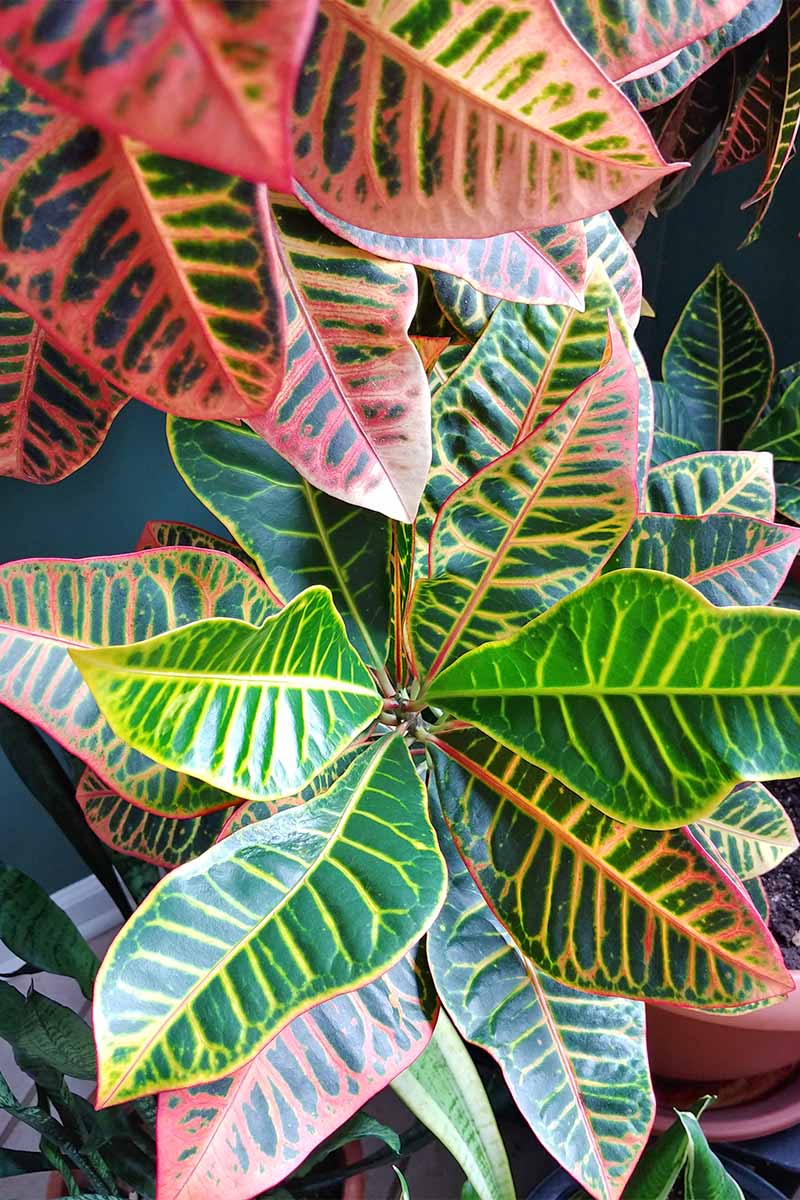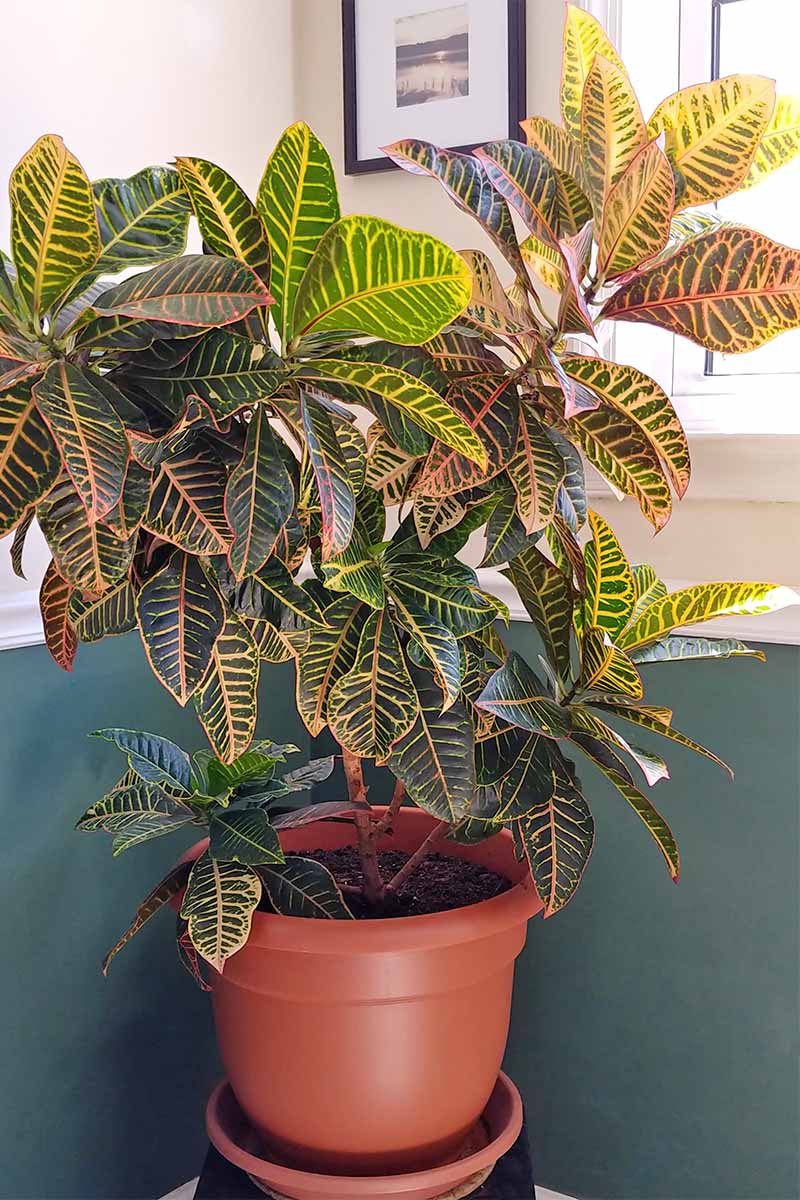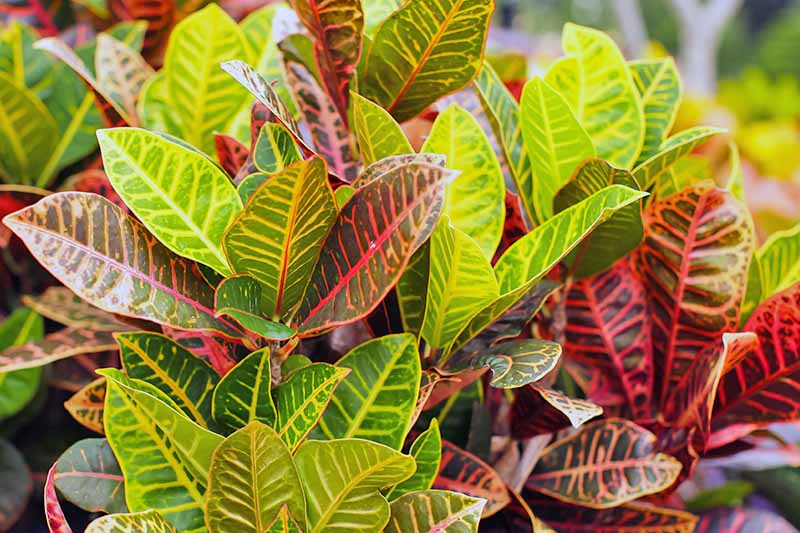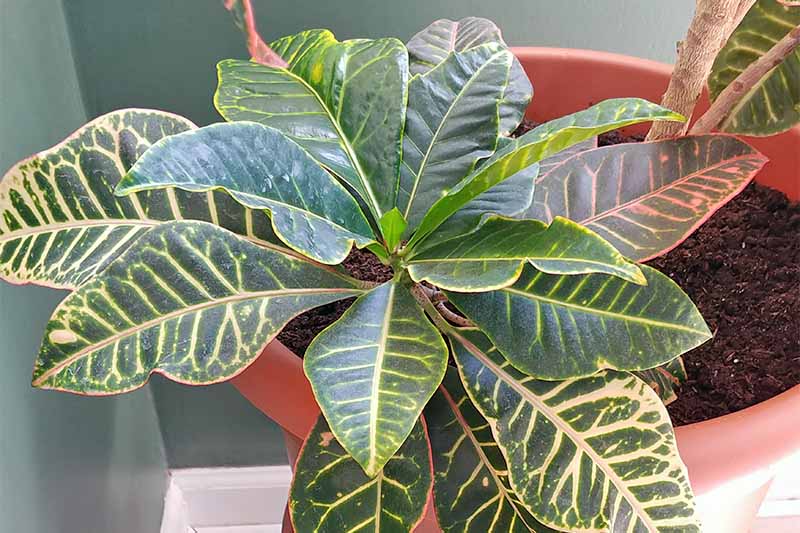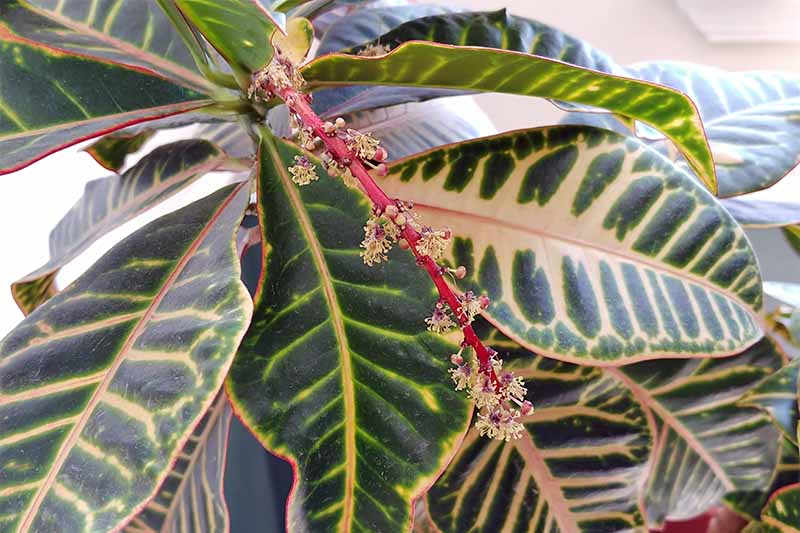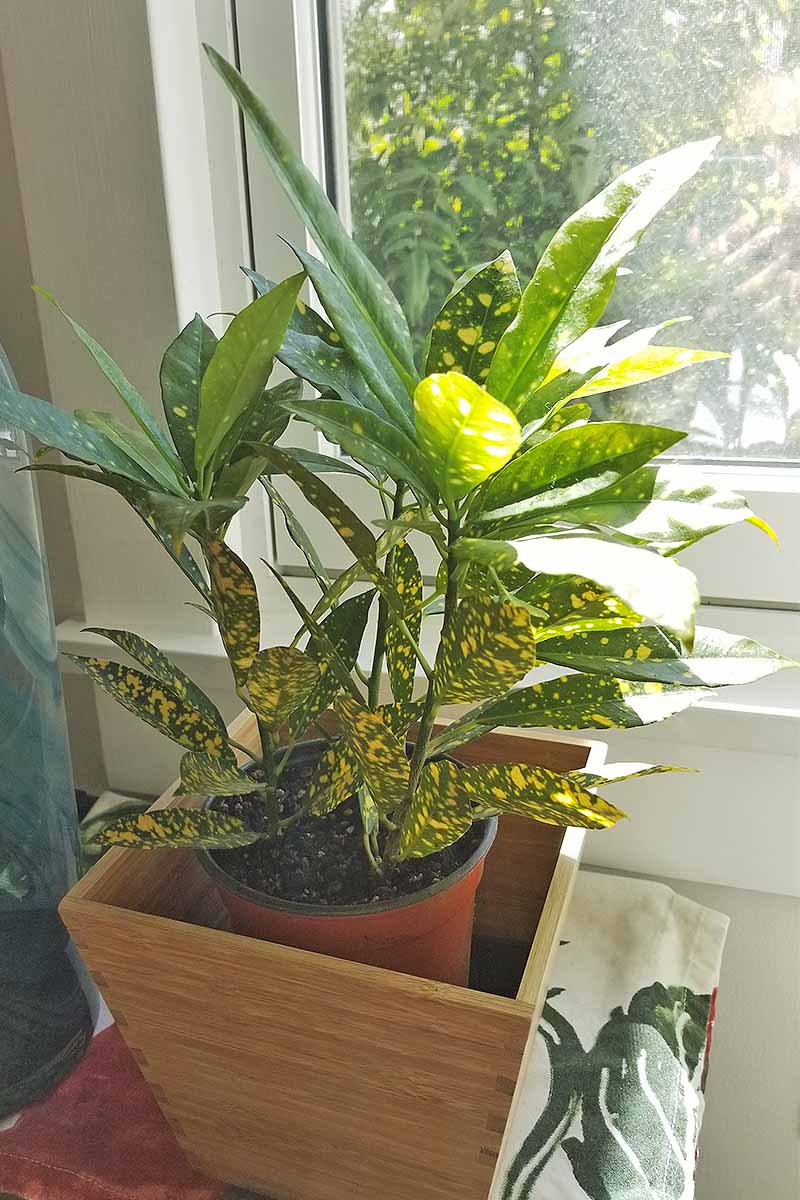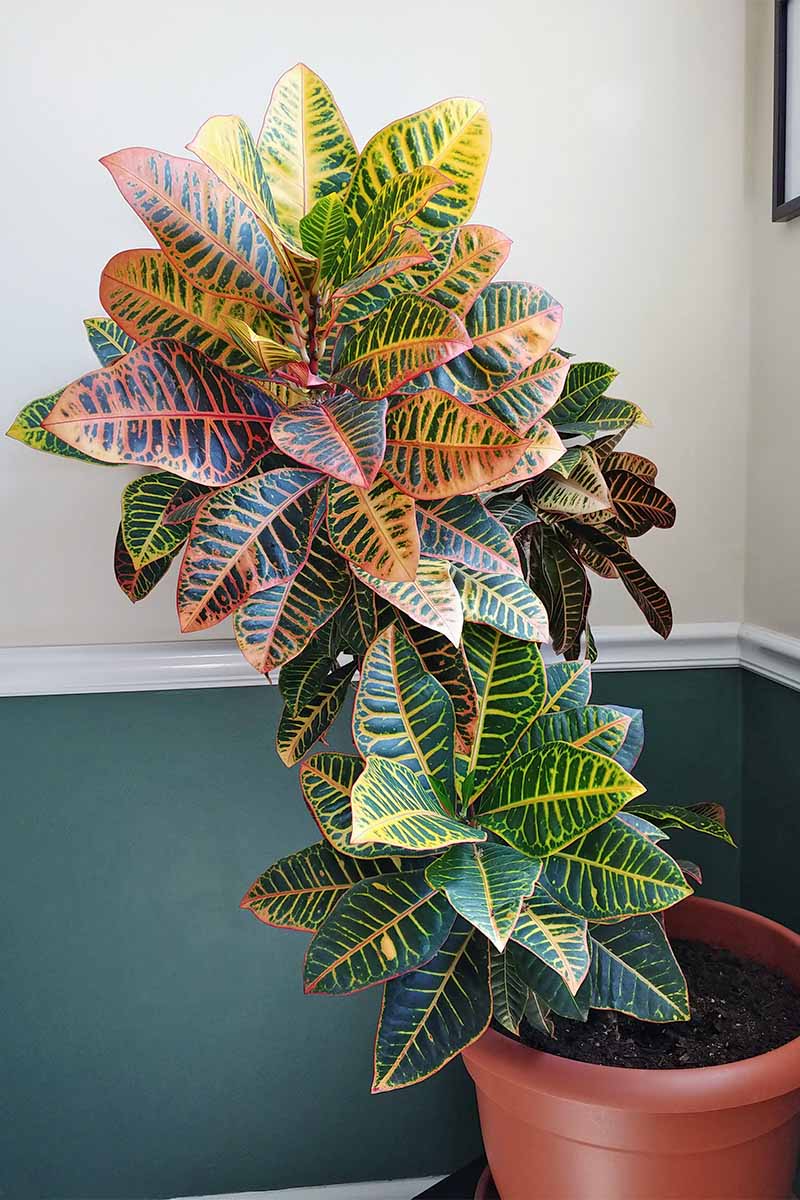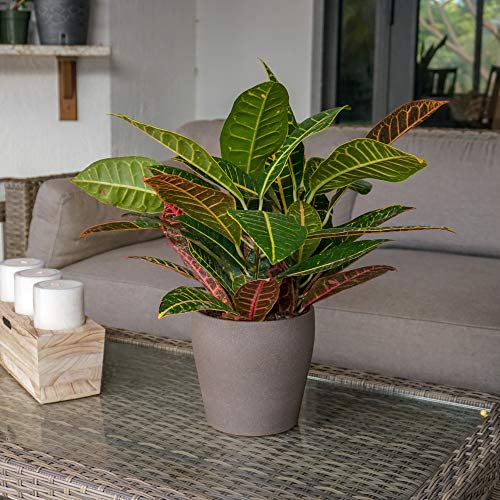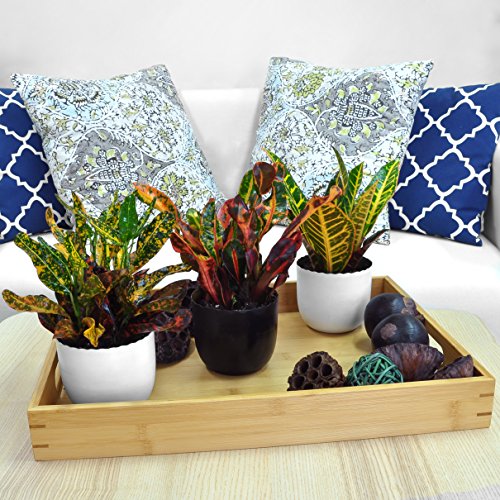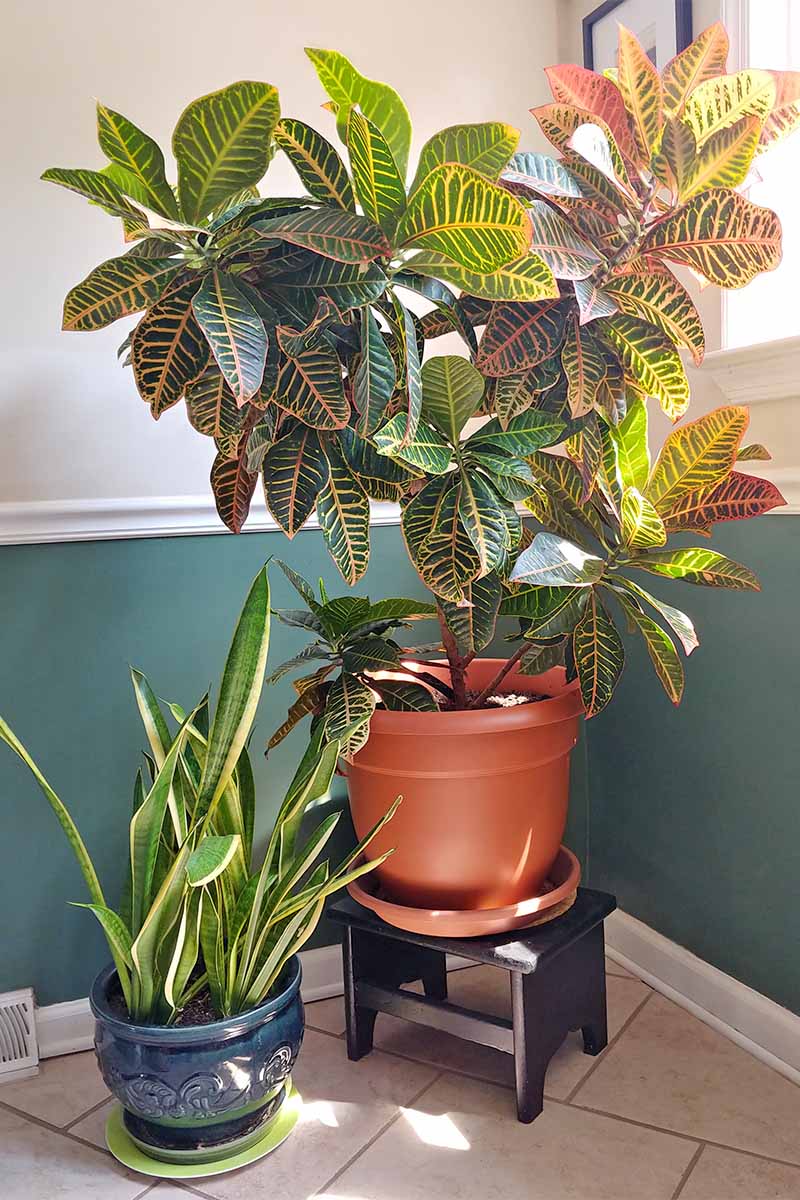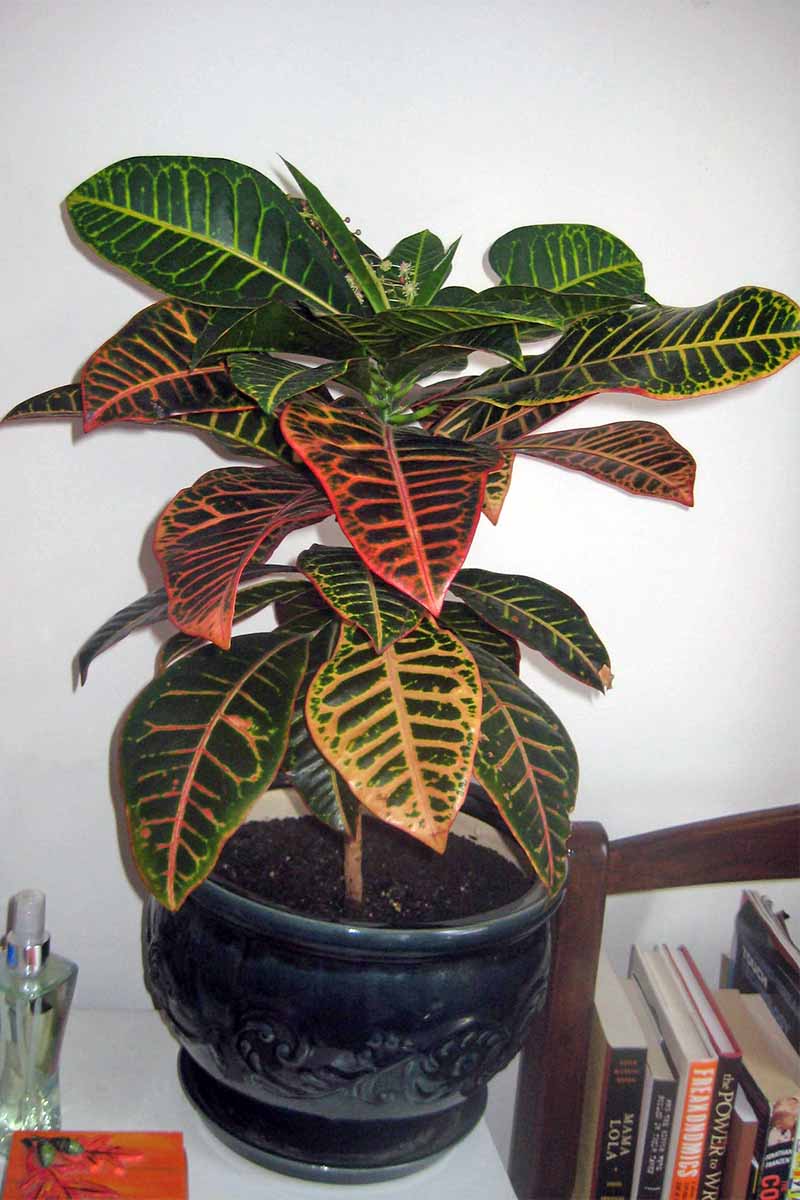A member of the genus Codiaeum in the Euphorbiaceae, or spurge, family, it is not to be confused with the “true croton” species of the genus Croton, also in the spurge family. If you’ve vacationed where it’s warm and humid, you’ve probably been awed by this brightly-colored shrub. There are many cultivars with glossy, leather-like leaves in various shapes. Colors range from yellow and green to red and almost black, with patches, speckles, or veins of contrasting colors. We link to vendors to help you find relevant products. If you buy from one of our links, we may earn a commission. Also known as rushfoil, Joseph’s coat, and variegated laurel, this slow-growing evergreen perennial is native to Australia and Southeast Asia. Those living in USDA Hardiness Zones 10 to 12 may cultivate it outdoors year-round, and the rest of us can enjoy it as an annual, or indoors as a houseplant. Ready to grow your own? We’ll teach you how! Here’s what’s ahead in this article: Let’s get started.
The Care and Feeding of C. variegatum
Choose a sunny placement with a south, west, or southwest exposure that is draft-free, and always above 60 degrees.
Garden Croton Houseplant Facts
Approximately 3 feet tall at maturity Showy, variegated foliage Sun-loving Moist, well-drained potting soil Slow-release fertilizer Temperate setting
Newhouse Lighting Dual Head LED Clamp Grow Light Your new croton is likely to come in a grower’s pot. If you want to upgrade to a sturdier, more decorative container, choose one with a drainage hole and a drip tray. Miracle-Gro Indoor Potting Mix, 6 Quart (2 Pack) Miracle-Gro Indoor Plant Food When the surface of the soil becomes dry to the touch, it’s time to water at soil level and mist the leaves. You may leave a little water in the drip tray to add to the moisture in the environment. Please note that this ornamental plant is toxic if ingested, and its sap may cause skin irritation.
On Repotting, Pests, and Propagation
Crotons grow slowly. Over time, you may notice that you are watering more frequently, or that your plant isn’t as perky as it used to be. If so, may be time to repot. To be certain, examine the drainage holes. If you see roots poking through, it’s time. Spring is the best time for repotting, as your plant is feeling especially vigorous. This is where some folks err on the side of generosity, myself included. When you repot a houseplant, choose the next size up, or in other words, a pot that is only an inch or two wider in diameter than the current container. A pot that is too deep will encourage excessive root growth, rather than lush foliage. To repot, first take note of how deep your plant sits in its old pot. You’ll want to replicate this depth in the new one. Gently ease your plant out of its old pot, dirt and all. Remove most of the old potting mix and tease the roots apart. Your new pot should be clean and have a drainage hole. Cover the bottom with pea gravel and pour in new potting medium to a depth of about one-third the total depth of the pot. Center your plant in the new pot, at the same depth it was in the old pot. Holding the plant with one hand, use your other to fill in around it with potting medium. Don’t fill to the top, but rather, leave a little space to prevent watering spillover. Tamp down gently, water, and tamp again. Your freshly repotted plant may droop or drop leaves until it regains its composure. Give it time to acclimate, and resist the urge to fertilize for at least a few weeks. To prevent transplant shock, you can also water with tepid rather than cool or cold water. A healthy croton is not prone to disease or insects. However, a plant weakened by too much or too little water, or one that is shocked by a change in environment, may be vulnerable to aphids, mealybugs, scale, or spider mites. Garden Safe Neem Oil Extract Concentrate Friends are sure to admire your new favorite houseplant, so why not try your hand at propagation so you can give them one of their very own? It’s easy! Here’s what you need to do: If you’re ready to get started with your first plant and you don’t have a friend or acquaintance with clippable cuttings at the ready, these can be purchased in garden centers or online as well. Let’s take a look…
A Croton to Love
I know you’re going to love having a garden croton in the house. Let me tell you about the one that lives at ours. C. variegatum ‘Petra’ in 6-inch Pot C. variegatum ‘Mammey’ in 6-inch Pot C. variegatum ‘Banana’ in 4-inch Pot Costa Farms Croton in 8.75-Inch Pot Costa Farms Croton Grower’s Choice Assortment, 4-Pack When my daughter arrived at college, the freshmen were given a tiny plant for their dorm room windowsills. She received a C. variegatum ‘Petra.’ Most of the students’ plants didn’t live to see Christmas, but my daughter’s not only survived, it thrived, and she named it “Jules.” Jules came home in May and went back to school in August for four years, and never dropped her leaves. This girl was a champ! After graduation, Jules came to live in my daughter’s empty bedroom, the sunniest room in the house. All was well until the day I went in and found her down to one leaf. Did I forget to water, or was she unhappy with her new surroundings? Either way, I am happy to report that crotons are quite resilient, and with a little TLC from my dad’s very green thumb, Jules made a full recovery. Now, at the ripe old age of 14, she occupies her own corner of the dining room. If you’ve never grown a big houseplant, now’s the time to make room for garden croton. It’s sure to become part of the family! For more on houseplants, check out our Houseplant Primer, and feel free to share your comments, questions, and advice in the comments section below. Photos by Nan Schiller and Allison Sidhu © Ask the Experts, LLC. ALL RIGHTS RESERVED. See our TOS for more details. Product photos via Newhouse Lighting, Miracle-Gro, Garden Safe, and Costa Farms.


